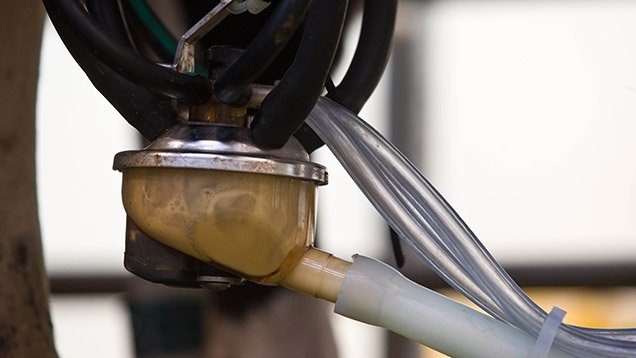First Milk farmers to add value through casein project
 (c) Tim Scrivener
(c) Tim Scrivener First Milk suppliers are being offered breeding and nutrition guidance on how to increase milk quality to improve processor efficiencies.
SAC Consulting is targeting a minimum casein level of 2.8% from a producer group of 33 farmers around the Kintyre and Gigha region in south-west Scotland who supply First Milk’s Cambeltown creamery.
Casein levels have a major effect on the quality and quantity of cheese the creamery can produce, according to project leader David Keiley, SAC senior dairy consultant, who is calling on processors to consider casein content in milk payment schedules.
See also: Latest milk price news
Farmers will be benchmarked according to casein production, ordering farms according to how many litres are required from each individual producer to produce a tonne of cheese.
“We started looking at improving milk quality with a group of farmers in Cambeltown a year ago,” Mr Keiley tells Farmers Weekly.
“In collaboration with the creamery manager we have focused on the end product and what makes the biggest difference to the business.”
High-casein milk increases the amount of cheddar produced by the creamery, also improving cheese keeping quality and texture, he adds.
Furthermore, high K-casein levels allow a better matrix to be formed in the cheese-making process, which retains more butterfat, reducing the amount of whey and whey butter lost.
“We are reducing the amount of whey and whey butter we have to put through a by-product proces,” says Mr Keiley. “We are trying to find sustainable solution to a number of problems. In my opinion everybody should be looking at casein.”
Feeding for high casein levels
Nutritional considerations and longer-term breeding objectives are to be rolled out across the producer group. Farmers can select for bulls with K-casein in mind, explains Mr Keiley.
High bypass protein in the form of soya bean meal will be fed to lift components, said Mr Keiley, adding: “We are looking at feeding good-quality starch in terms of enhancing milk protein by feeding wheat and maize.”
A further possibility is the feeding of whey permeate, which SAC plans to feed as source of lactose.
